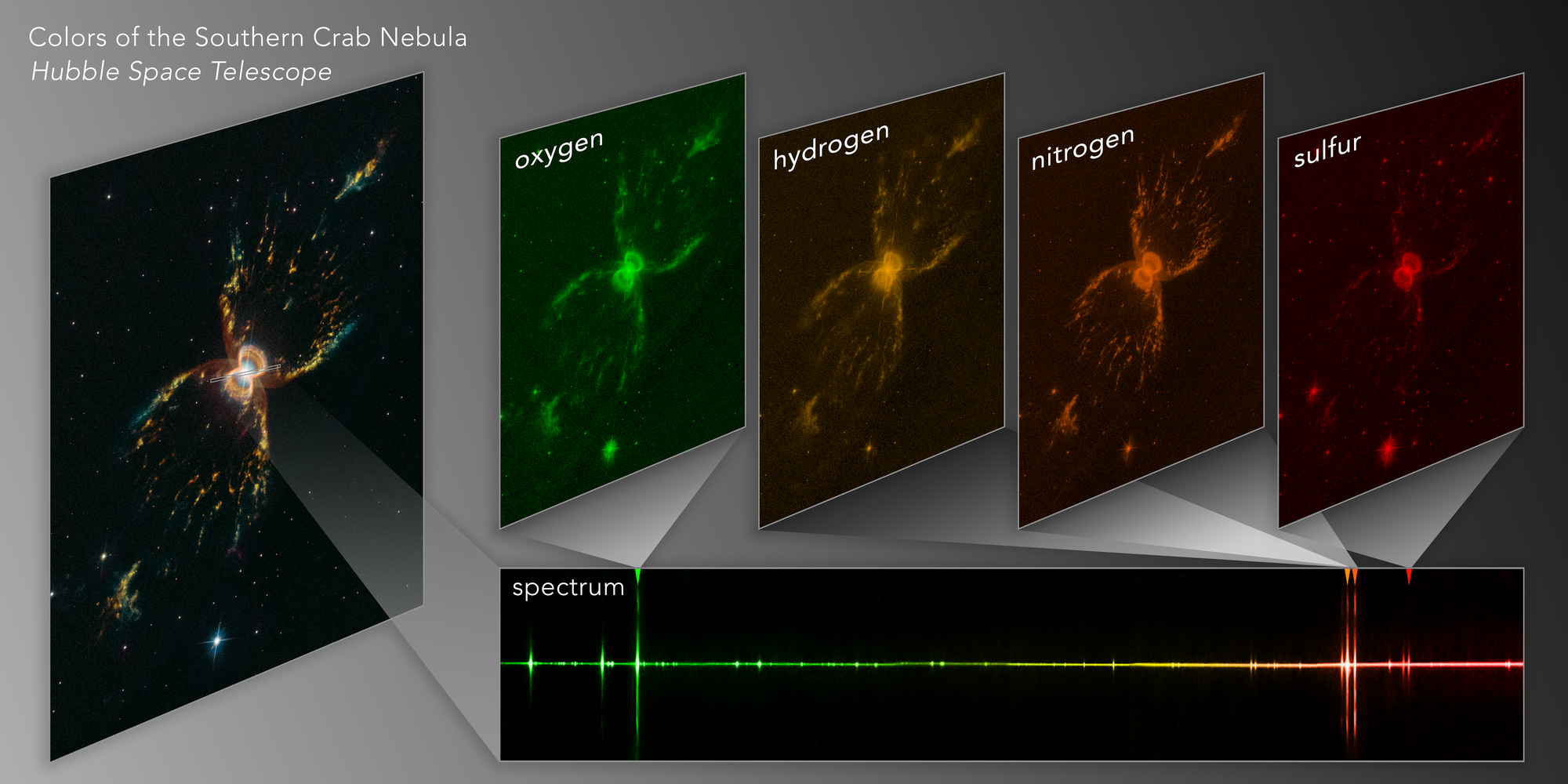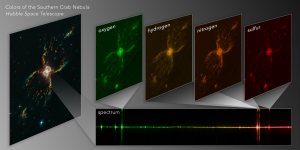
Southern Crab Nebula Spectra
This diagram illustrates how Hubble Space Telescope spectral observations were used to study the chemical makeup of the Southern Crab Nebula. The hourglass-shaped nebula contains elements forged in the interior of its two aging central stars that were then blasted back into space. Energized by radiation from the pair of bright stars, each of these elements glows in specific colors (or wavelengths) of light. Hubble's Space Telescope Imaging Spectrograph (STIS) divided the light from the nebula's filaments to record the emission from hydrogen, sulfur, oxygen, and nitrogen. The combination of STIS spectroscopy and the image from Hubble's Wide Field Camera 3 shows specifically which gases were detected and how they are distributed in the nebula. The STIS spectrum allows for a better understanding of the nature of the two stars at the nebula's center. Now injected into interstellar space, these elements will be available for future generations of stars, planets, and possibly life. NASA's upcoming James Webb Space Telescope will routinely use spectroscopy to explore a wide range of astronomical research, from exoplanets to the remote universe.
- X

























